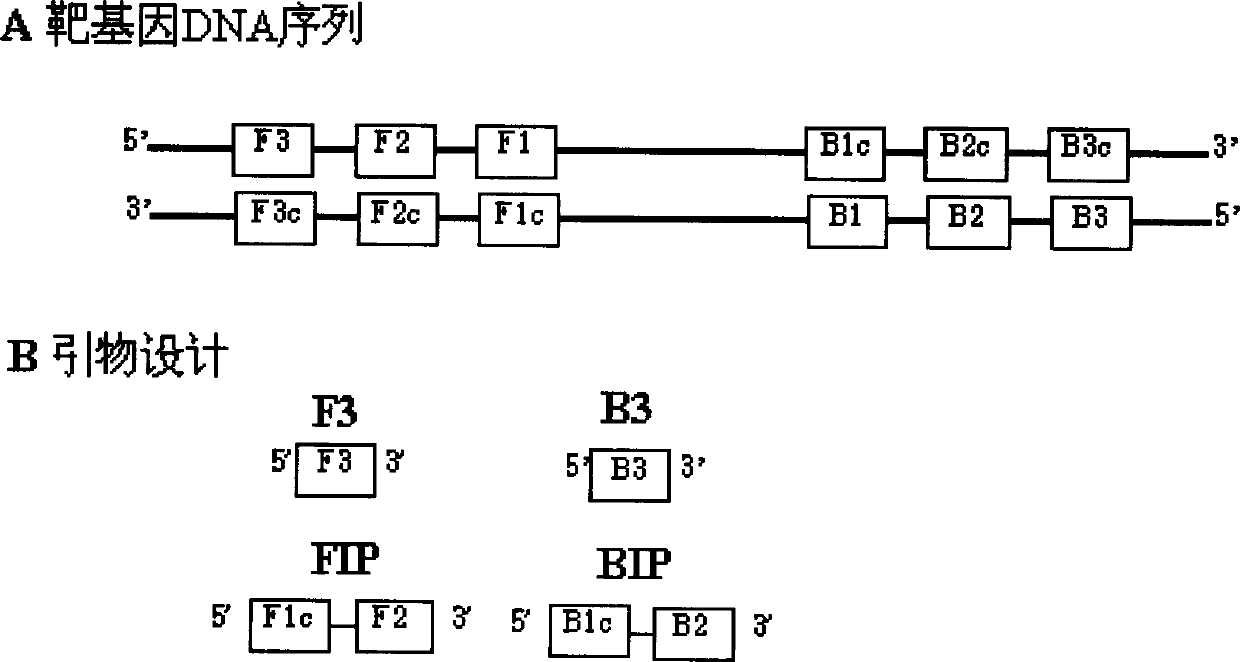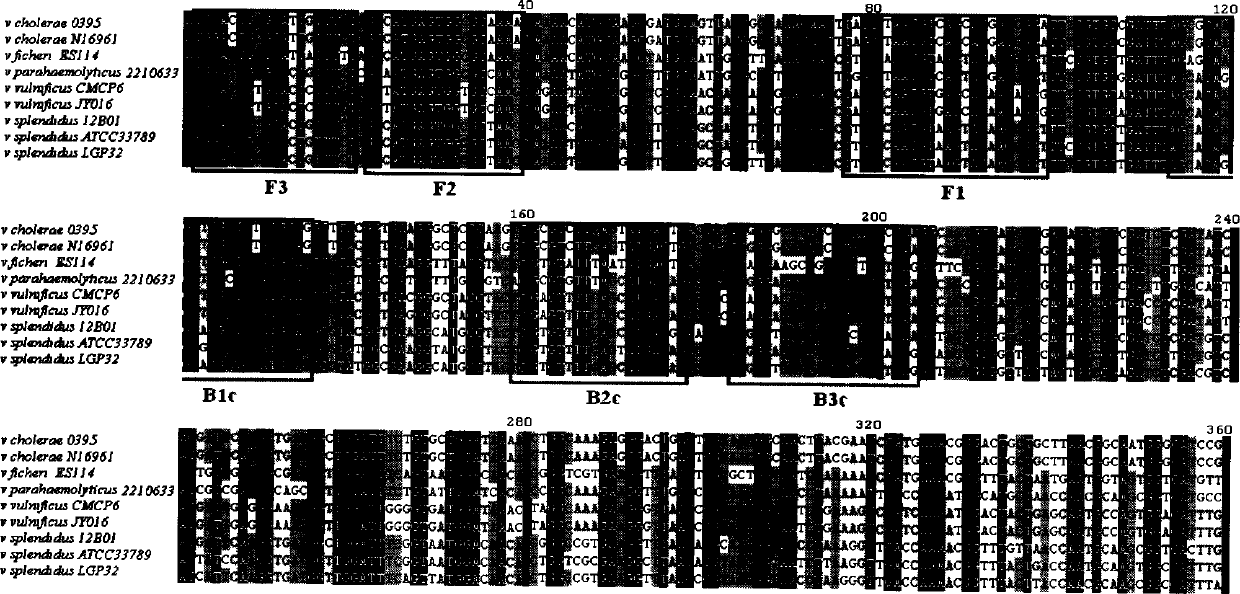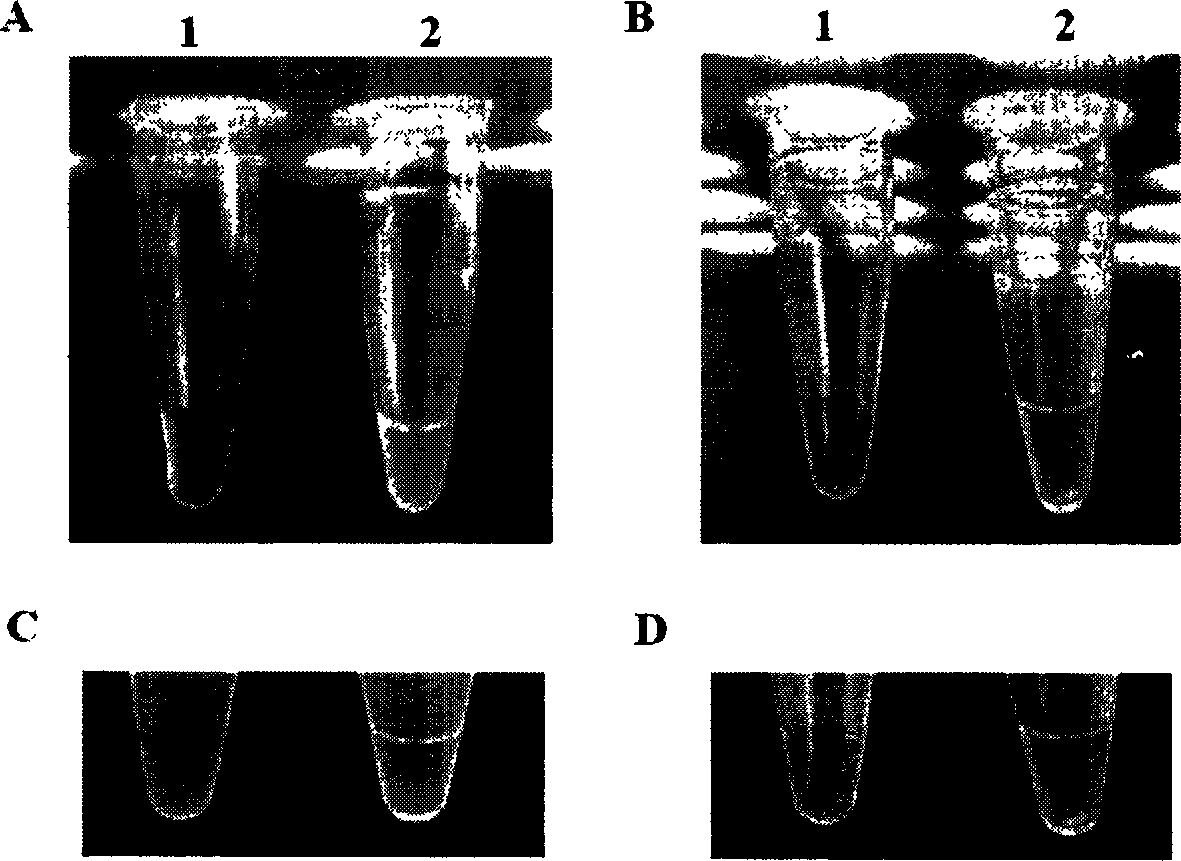Method for rapidly detecting main pathogenic bacteria, namely vibrio splendidus of sea cucumber skin disease
A technology for Vibrio splendidus and rotting skin disease, applied in the field of detection of causative bacteria of cultured sea cucumber rotting skin disease syndrome, can solve the problems of limited popularization and application, and achieve the effects of high sensitivity, short time-consuming, simple and easy-to-operate detection method
- Summary
- Abstract
- Description
- Claims
- Application Information
AI Technical Summary
Problems solved by technology
Method used
Image
Examples
Embodiment 1
[0047] 1. Preparation of LAMP template
[0048] Vibrio (including 3 strains of Vibrio brilliant) routinely cultured in the laboratory, when the OD600 reaches 0.6, take 1.0ml into a 1.5ml EP tube, centrifuge at 13,000rpm for 3min, suspend the precipitate with 1.0ml of sterile PBS buffer, Centrifuge again at 13,000 rpm, and suspend the pellet in 1.5 ml sterile PBS. The prepared bacterial suspension was placed in a -20°C refrigerator for 10 minutes to freeze completely, then placed in a boiling water bath for 10 minutes, and immediately transferred to an ice bath for 3 minutes. Equilibrate at room temperature and serve as a LAMP template.
[0049] 2. Gene sequence analysis and primer design
[0050] The flagella-related gene FlgF, which is ubiquitous in Vibrio bacteria, was selected, and the known Vibrio FlgF gene and protein sequences were searched through the GeneBank database.
[0051] The complete DNA and protein sequences of FlgF obtained from 9 strains of Vibrio were com...
Embodiment 2
[0072] According to the detection method of Example 1, the reaction time is set to 0, 15, 30, 45, 60 minutes respectively, and 2.0% agarose gel electrophoresis detects as Figure 4 . Depend on Figure 4 It can be seen that a good detection effect can be obtained for 30-60 minutes.
Embodiment 3
[0074] According to the detection method of Example 1, the concentration of dNTP is respectively set to 3.0mM, 2.5mM, 2.0mM, 1.5mM, 1.0mM, 0.5mM, after the end of the reaction, 2.0% agarose gel electrophoresis detection Figure 5 . Depend on Figure 5 It can be seen that the concentration of dNTP affects the result of LAMP reaction. The concentration is preferably 0.5-2.0mM.
PUM
 Login to View More
Login to View More Abstract
Description
Claims
Application Information
 Login to View More
Login to View More - R&D
- Intellectual Property
- Life Sciences
- Materials
- Tech Scout
- Unparalleled Data Quality
- Higher Quality Content
- 60% Fewer Hallucinations
Browse by: Latest US Patents, China's latest patents, Technical Efficacy Thesaurus, Application Domain, Technology Topic, Popular Technical Reports.
© 2025 PatSnap. All rights reserved.Legal|Privacy policy|Modern Slavery Act Transparency Statement|Sitemap|About US| Contact US: help@patsnap.com



